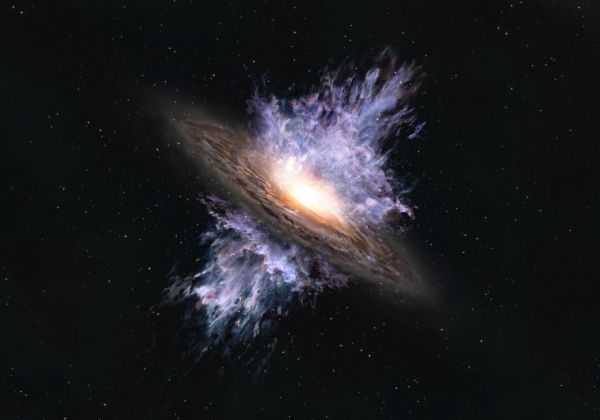Researchers using the Atacama Large Millimeter/submillimeter Array (ALMA) discovered a titanic galactic wind driven by a supermassive black hole 13.1 billion years ago. This is the earliest-yet-observed example of such a wind to date and is a telltale sign that huge black holes have a profound effect on the growth of galaxies from the very early history of the Universe.
At the center of many large galaxies hides a supermassive black hole that is millions to billions of times more massive than the Sun. Interestingly, the mass of the black hole is roughly proportional to the mass of the central region (bulge) of the galaxy in the nearby Universe. At first glance, this may seem obvious, but it is actually very strange. The reason is that the sizes of galaxies and black holes differ by about 10 orders of magnitude. Based on this proportional relationship between the masses of two objects that are so different in size, astronomers believe that galaxies and black holes grew and evolved together (coevolution) through some kind of physical interaction.
A galactic wind can provide this kind of physical interaction between black holes and galaxies. A supermassive black hole swallows a large amount of matter. As that matter begins to move at high speed due to the black hole’s gravity it emits intense energy, which can push the surrounding matter outward. This is how the galactic wind is created.
Read more at National Institutes of Natural Sciences
Image: Artist's impression of a galactic wind driven by a supermassive black hole located in the center of a galaxy. The intense energy emanating from the black hole creates a galaxy-scale flow of gas that blows away the interstellar matter that is the material for forming stars. (Credit: ALMA (ESO/NAOJ/NRAO))


